

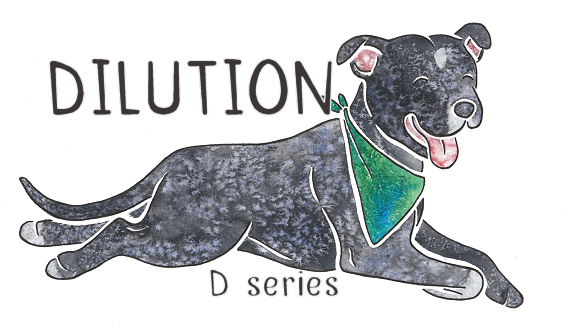

Already know what you're looking for? Quick Links | ||
The Dilution Gene
The dilution gene occurs on the D locus. It is recessive, so d is dilute and D is non-dilute, and in order for
a dog to be dilute it must have the genotype dd. A dog that is Dd or DD will have normal (non-dilute) pigment.
The dilution gene affects eumelanin (black and liver), although phaeomelanin (red) may be lightened as well. When a
dog has two copies of the d allele, a black
dog will become blue (aka slate) and a liver (chocolate) dog becomes isabella (aka lilac). A blue or isabella can have any coat pattern, but whatever they have,
any black or liver in the coat will be turned to blue or isabella. It is genetically impossible for a blue dog to have any black in its coat, or for an isabella
to have liver.
The main giveaway that a dog is a dilute is generally its nose colour. The coat may be entirely sable or recessive red for example, but if the dog
has a blue nose, it is genetically blue-pigmented.
Isabella, however, is slightly trickier. The dogs below show nicely-pigmented liver and isabella noses, but it's common for both colours
to have very light, even pink, noses, and it is also common for isabellas to have darkish noses that look like liver. It is therefore very difficult to tell a liver from an isabella unless there is some liver/isabella in the coat.
The dilution gene also causes the eyes to lighten to amber. The colour is likely to be paler than the amber eyes seen on liver dogs.
For more information on the effects of dilution on eye and nose colour, and further photo examples, see the eye and nose pages.
** A number of dilution mutations have recently been discovered (three, at the time of writing). As with liver, the different d alleles all behave and interact in the same way, and don't appear to change the shade of the coat. The only relevance is in genetic testing - if d locus results are important to you, make sure to choose a lab that tests for all currently known d locus mutations in your breed.
Breeds Carrying Dilution
Dilution can occur in almost any breed, and may remain hidden for many generations. Within most breeds however, the blue gene is fairly uncommon. Notable exceptions are the Weimaraner and Slovakian pointer, which are the only breeds to come
entirely in dilute and no other colour. The dilute gene is also notably common in Italian greyhounds, whippets, Tibetan mastiffs, greyhounds, Staffordshire bull terriers, and Neapolitan mastiffs.
It is likely that the dilution mutation occurred very early in the domestication of the dog, and has occured more than once. It certainly seems to occur in most (if not all) breed types.
Dilution and Health
It's often claimed that dilute dogs are less healthy than those with normal pigment. This misconception has most likely come from the prevalence in some breeds of a condition known as Colour Dilution Alopecia (CDA). Colour Dilution Alopecia affects the coat texture and length only, and not all breeds or dilute dogs are affected. The majority of blues and isabellas are completely healthy, and as testing is not currently available, the best way to avoid CDA is to only breed dilute dogs with normal coat. See the Health Problems page for more information on CDA.
Similarly, some breeders claim that dilute dogs should never be bred together. There is no genetic basis for this claim. In fact, breeding healthy dilute to healthy dilute is the only way to reduce CDA in lines (until testing becomes available), and breeds that come only in dilute (e.g. Weimaraner) or have very high incidence of dilute are far less likely to have CDA. Blue (Dilute Black)
Black dogs become blue when they are dd on the D locus. Blues can range from silver to slate or almost black, and it can be difficult to
tell a blue from a black by just looking at photographs. However, when the dog is actually examined, it should be obvious that the nose is blue.
The dogs below show blue in various patterns. I won't explain the patterns here as they're dealt with on their own pages, but hover your mouse
over the photos to see a description of their colour.
Isabella (Dilute Liver)
The same dilution gene that causes a black dog to become blue also causes a liver dog to become isabella (aka lilac), which is a pale greyish brown. Dilution and liver are both
recessive and relatively rare in the dog population as a whole, so isabella is generally a rarely seen colour. It is, however, the colour of the Weimaraner, and also occurs occasionally in a handful
of other breeds.
The photos below show isabella dogs.
Isabella can occur in any pattern, as these two tan-pointed (atat) dogs show.
Dilute Look-A-Likes
There are a few genes that can cause a dog to display a greyish colour when in fact they're not blue-pigmented or isabella, but standard black or liver. Merle gives
a bluish base coat, and the greying gene can also turn a dog grey.
True dilutes are sometimes known as "born blues". This is because the dog will display the blue colour from birth,
whereas a dog with greying will be born black (or liver) and fade as the coat grows.
The following dogs are not actually blues.
Quick Summary!
The D locus controls the intensity of eumelanin in the coat (and also the eyes/nose/etc). There are just two alleles on this locus - D and d (although there are a number of slightly different d alleles that are phenotypically the same).
Eumelanin dilution is recessive, so D is non-dilute and d is dilute. Only a dd dog will actually be a dilute, and a Dd dog will be a carrier. This means that a dilute puppy can be born from two non-dilute parents.
All eumelanin is affected on a dd dog. If the dog has any black or liver then it is not a true dilute. Generally the most failsafe way to tell a blue is by looking at the nose.
dd also affects liver as well as black. A liver dilute is a light grey/brown and is generally known as an isabella or lilac. This is the colour of the Weimaraner. Further Info and Links
The gene causing dilution in dogs is known as MLPH (Melanophilin). It causes problems with the transportation of pigment along the hair shafts, resulting in the pigment molecules "clumping together" instead of spreading out as they should do.
MLPH causes dilution in a number of different species, including rats, mice, cats and humans, and the alleles causing this dilution are always recessive.
Some studies have suggested that there may be additional causes of dilution in dogs, not related to MLPH, but these genes have not yet been identified. A potential candidate for non-MLPH dilution in dogs is TYRP2, which is known to cause some forms of dilution in mice, and the phenotype of these mice is certainly similar to the darker shades of blue in dogs.
Links to studies:
** Please note that I am not a research scientist, and the information on this page comes from my own knowledge and observation of dogs, observational and testing data provided via e-mail by site visitors, any research papers linked on the page, and the information provided by Dr Sheila M. Schmutz on her excellent website http://homepage.usask.ca/~schmutz/dogcolors.html
All links are provided for advertisement and/or information purposes only, and I am not affiliated with any genetics testing labs or other companies.
For further genetics resources, see the Links page

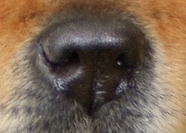
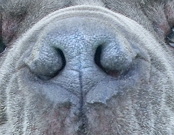
Black nose (left) and blue nose (right).
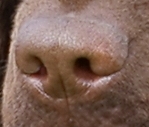

Liver nose (left) and isabella nose (right). Most isabella noses aren't this dark, but they can be.


Most labs use numbering to label the D locus mutations - e.g. d1, d2 etc **



Brindle stripes, tipping on a sable, masks, black patches on merles, saddles, patches on a black piebald, and the black on a tan-pointed dog will all be turned to blue when a
dog has the dilution gene. Any and all black hair on the dog is included. Sable tipping and merle patches may become difficult to see when they're diluted.
Note the fairly pale red (phaeomelanin) areas on some of these dogs. Dilution may affect phaeomelanin slightly (although this is the source of some contention), but certainly not to the same extent as it affects eumelanin.
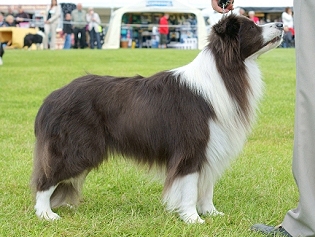
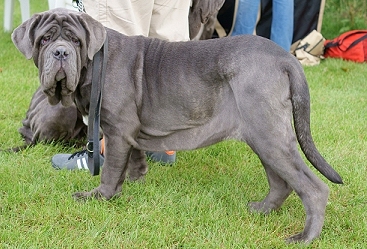
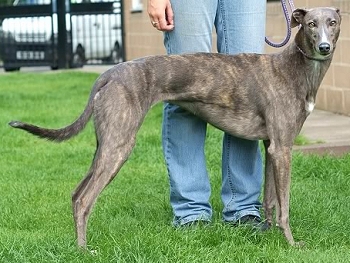

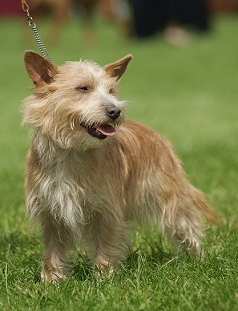
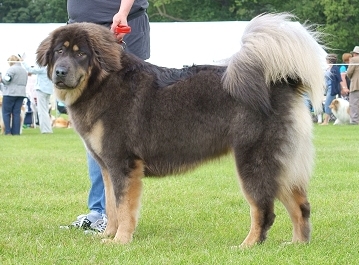
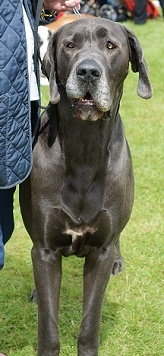
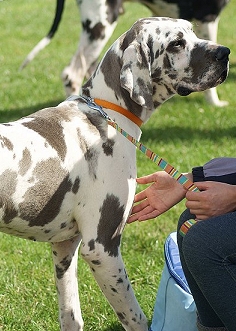
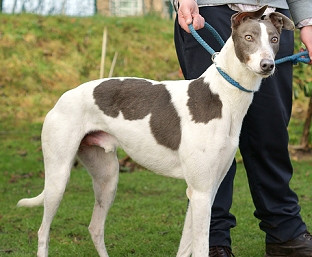

An isabella dog will have the genotype bbdd (homozygous for liver, homozygous for dilution). If the dog is Bb or BB, it will be blue instead.
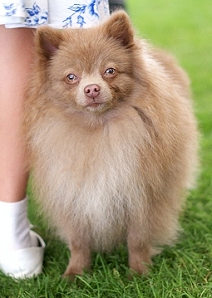
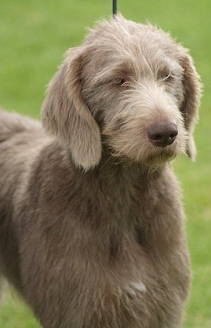
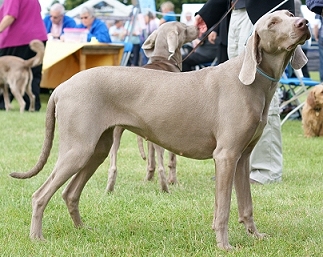
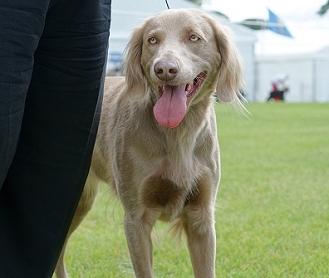
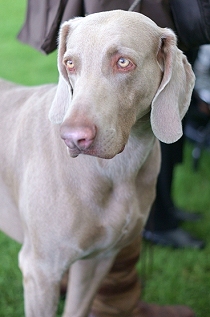
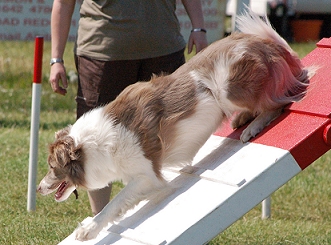
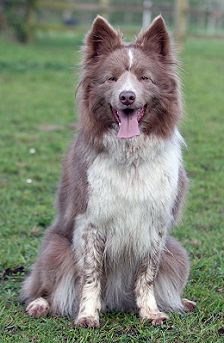
The first isabella Border Collie photo above is by Cat of Dog Rad Design, and the second shows the beautiful Star and was submitted by Deborah Crease.


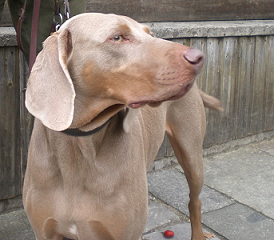
First photo by Sarah Elizabeth Adams, second photo submitted by Dr Anna Laukner

The sure-fire way to tell a black from a blue is to look at the nose. If the dog looks blue but has a black nose, it is in fact black with the greying
gene (note that the eyes are a less reliable indicator, as some black dogs can have light amber or copper eyes). The greying gene exists in Bearded Collies, Polish Lowland Sheepdogs, Bedlington Terriers, Old English Sheepdogs, Kerry Blue Terriers, Dandie Dinmonts and a few other long- or curly-coated breeds. Greying can also affect
liver, so a liver dog could appear to be isabella (e.g. cafe au lait in poodles).
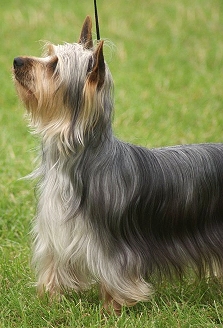
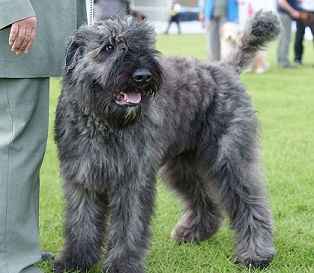
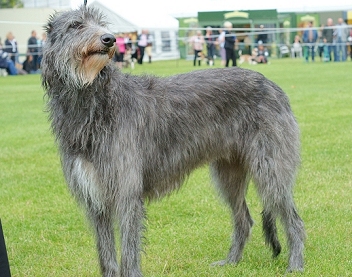
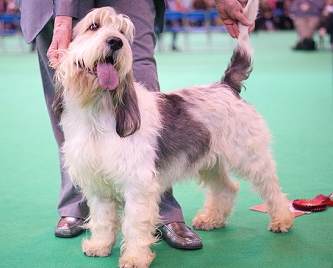
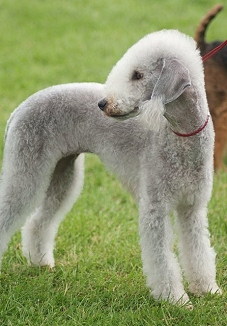
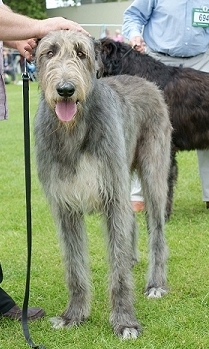

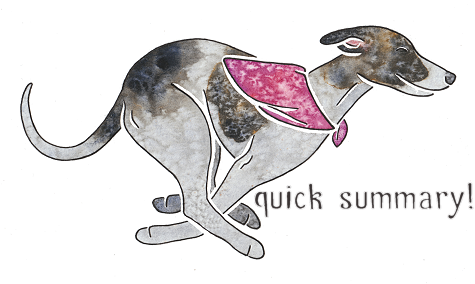
No time to read the whole thing? Here's the quick version!

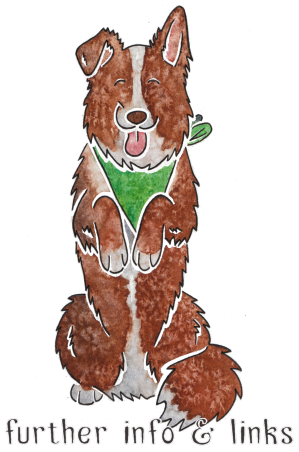
MLPH Genotype - Melanin Phenotype Correlation in Dilute Dogs: http://jhered.oxfordjournals.org/content/100/suppl_1/S75.full
Polymorphisms within the canine MLPH gene are associated with dilute coat color in dogs: http://www.biomedcentral.com/1471-2156/6/34

